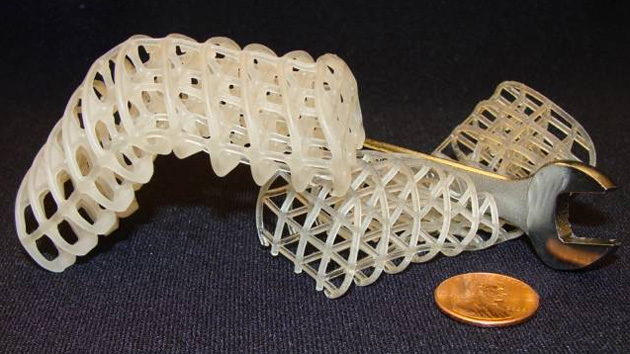Robots tend to be either very rigid or very soft, but neither extreme is ideal; ideally, machines could both squish themselves into tight spaces and remain sturdy for strength-dependent tasks. They just might, thanks to a team-up between MIT and Google’s Boston Dynamics. The two have developed a composite material that can switch between hard and soft states on the fly. The design mates a compressible foam inside with an external wax coating. If a robot needed to deform, all it would have to do is soften the right joints with a bit of heating. It could even heal damage by heating and cooling an affected area.
It’s still early days, but there are already plenty of potential real-world applications for the material. DARPA (the impetus for the project) wants robots that can literally slip through the cracks to reach otherwise inaccessible areas; they could rescue survivors trapped under rubble, for example. MIT, meanwhile, pictures surgical bots that could repair hard-to-reach body parts. We’re still a long, long way from the liquid metal of Terminator 2‘s T-1000, but these findings suggest that the concept of a shape-shifting automaton isn’tcompletely far-fetched.

